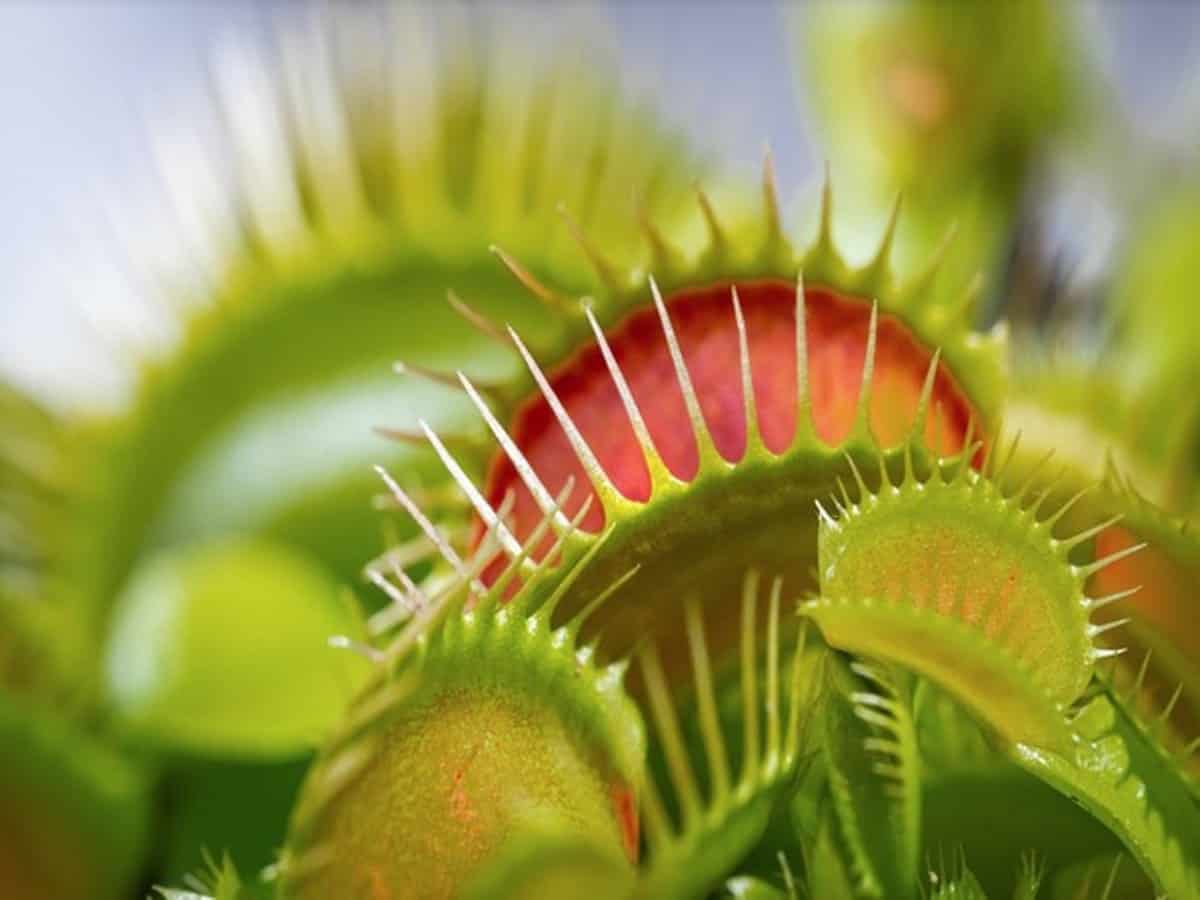
California: Venus flytrap is a carnivorous plant that catches its prey (chiefly insects and arachnids) with a trapping structure formed by the terminal portion of each of the plant’s leaves. How this happens is a question that has often plagued people. Now, scientists at Scripps Research have revealed the three-dimensional structure of Flycatcher1, an aptly named protein channel that may enable Venus flytrap plants to snap shut in response to prey.
The structure of Flycatcher1, published in ‘Nature Communications’, helped in shedding light on longstanding questions about the remarkably sensitive touch response of Venus flytraps.
The structure also helped in giving the researchers a better understanding of how similar proteins in organisms including plants and bacteria, as well as proteins in the human body with similar functions (called mechanosensitive ion channels), might operate.
“Despite how different Venus flytraps are from humans, studying the structure and function of these mechanosensitive channels gives us a broader framework for understanding the ways that cells and organisms respond to touch and pressure,” said co-senior author and Scripps Research professor Andrew Ward, PhD.
“Every new mechanosensitive channel that we study helps us make progress in understanding how these proteins can sense force and translate that to action and ultimately reveal more about human biology and health,” added co-senior author Ardem Patapoutian, PhD, a Scripps Research professor who won the Nobel Prize in Physiology or Medicine for research on the mechanosensitive channels that allow the body to sense touch and temperature.
Mechanosensitive ion channels are like tunnels that span the membranes of cells. When jostled by movement, the channels open, letting charged molecules rush across. In response, cells then alter their behaviour — a neuron might signal its neighbour, for instance. The ability for cells to sense pressure and movement is important for people’s senses of touch and hearing, but also for many internal body processes — from the ability of the bladder to sense that it’s full to the ability of lungs to sense how much air is being breathed.
Previously, scientists had homed in on three ion channels in Venus flytraps thought to be related to the ability of the carnivorous plant to snap its leaves shut when its sensitive trigger hairs get touched. One, Flycatcher1, caught researchers’ attention because its genetic sequence looked similar to a family of mechanosensitive channels, MscS, found in bacteria.
“The fact that variants of this channel are found throughout evolution tells us that it must have some fundamental, important functions that have been maintained in different types of organisms,” said co-first author Sebastian Jojoa-Cruz, a graduate student at Scripps Research.
In the new study, the researchers used cryo-electron microscopy — a cutting-edge technique that revealed the locations of atoms within a frozen protein sample — to analyze the precise arrangement of molecules that formed the Flycatcher1 protein channel in Venus flytrap plants. They found that Flycatcher1, in many ways was similar to bacterial MscS proteins — seven groups of identical helices surrounding a central channel. But, unlike other MscS channels, Flycatcher1 had an unusual linker region extending outward from each group of helices. Like a switch, each linker can be flipped up or down. When the team determined the structure of Flycatcher1, they found six linkers in the down position, and just one flipped up.
“The architecture of Flycatcher1’s channel core was similar to other channels that have been studied for years, but these linker regions were surprising,” said Kei Saotome, PhD, a former postdoctoral research associate at Scripps Research and co-first author of the new paper.
To help elucidate the function of these switches, the researchers altered the linker to disrupt the up position. Flycatcher1, they found, no longer functioned as usual in response to pressure; the channel remained open for a longer duration when it would normally close upon removal of pressure.
“The profound effect of this mutation tells us that the conformations of these seven linkers is likely relevant for how the channel works,” said co-senior author Swetha Murthy, PhD, of Vollum Institute at Oregon Health and Science University, a former postdoctoral research associate at Scripps Research.
Now that they solved the molecular structure, the research team planned future studies on the function of Flycatcher1 to understand how different conformations affect its function. More work was also needed to determine whether Flycatcher1 is solely responsible for the snapping shut of Venus flytrap leaves, or whether other suspected channels played complementary roles.

